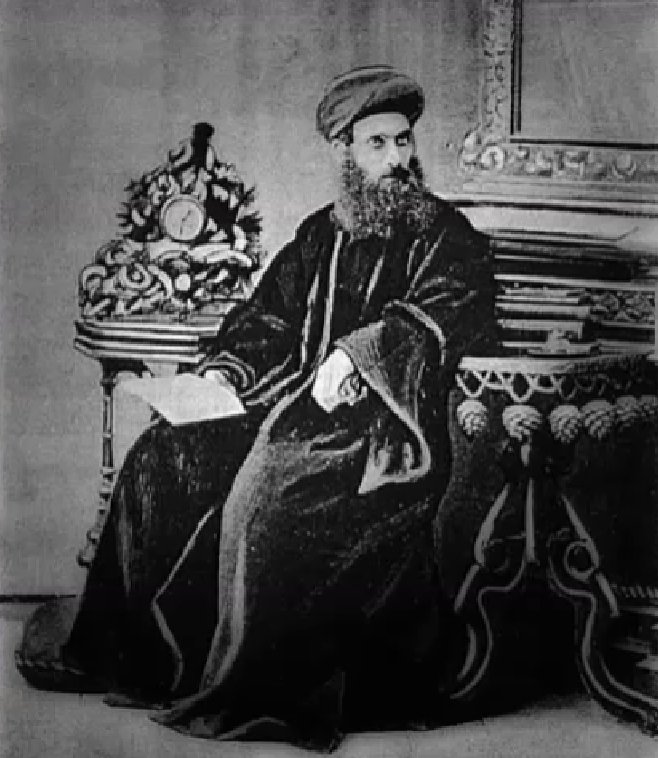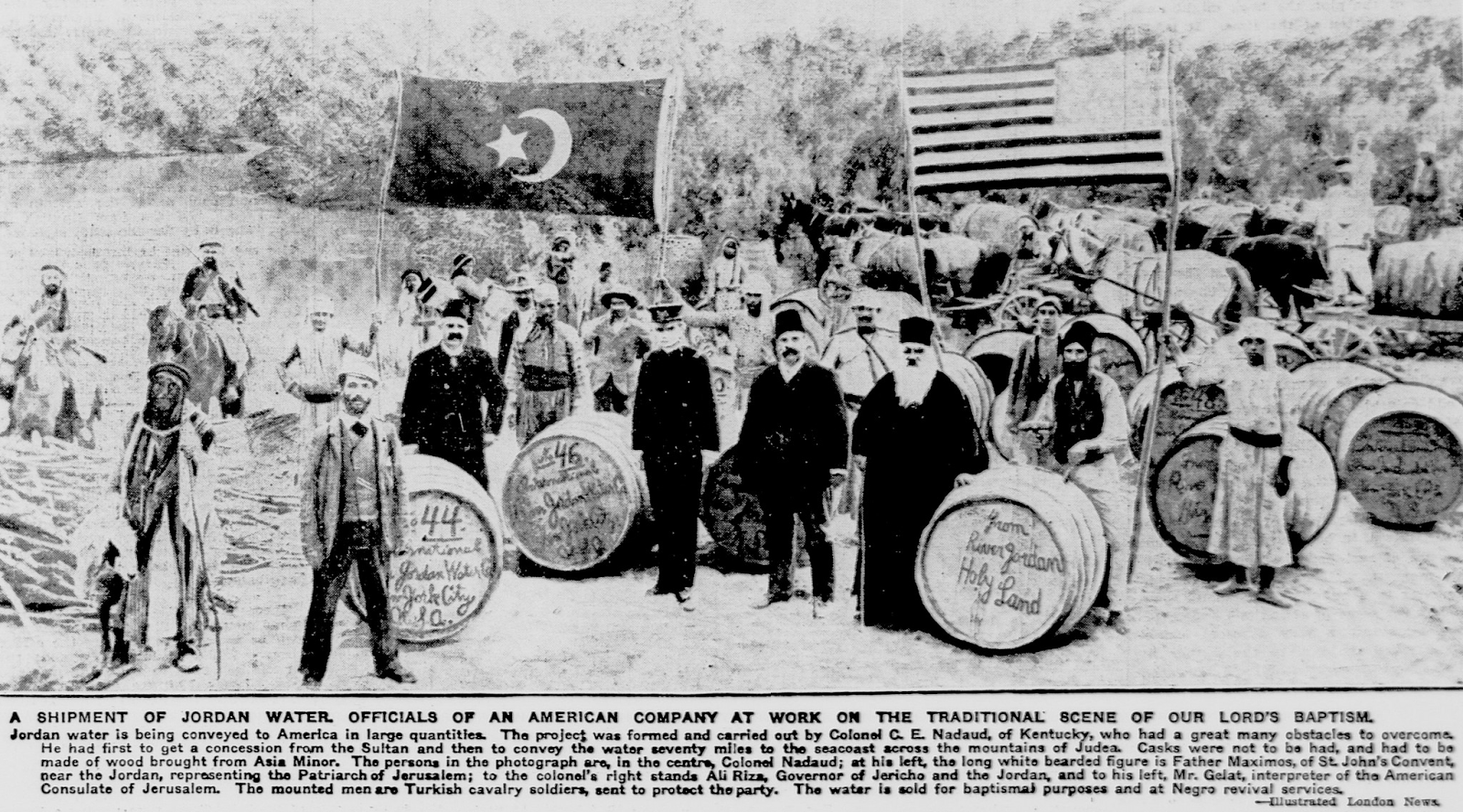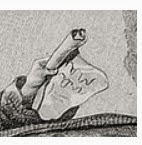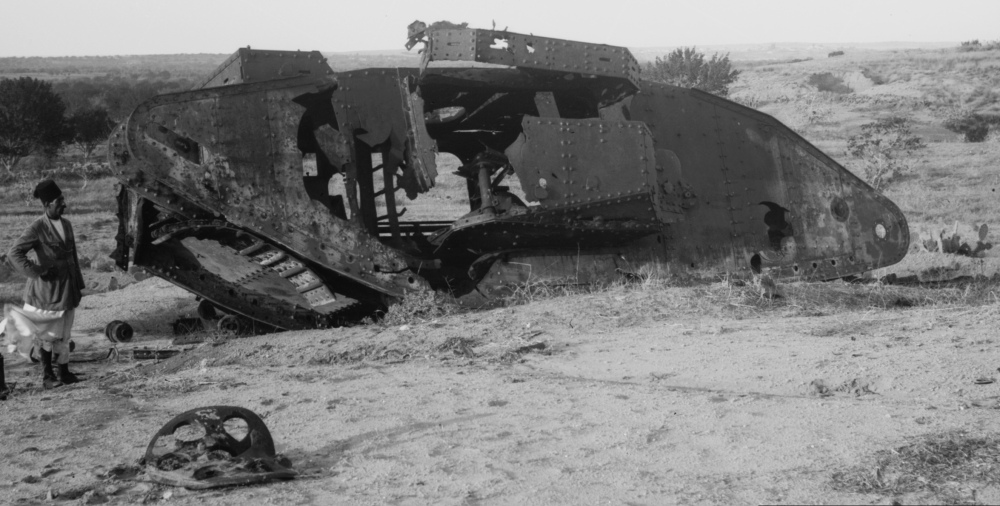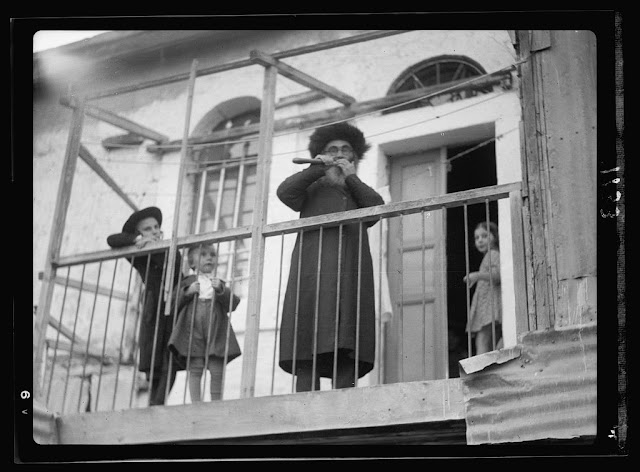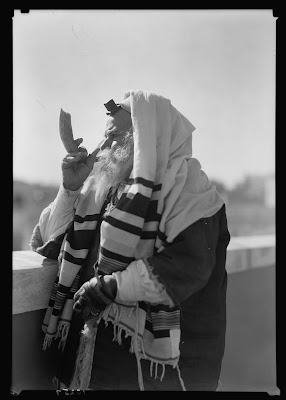 |
|
the U.S. Navy)
|
One hundred years ago the Jews of Palestine suffered terribly from hunger, disease and oppression. The territory was ruled with an iron fist by the Ottoman (Turkish) army. The Middle East teetered on the brink of World War I, and in 1914 Turkey abolished the “capitulation” agreements with European powers which granted them elements of sovereignty over their subjects in the Ottoman Empire. For many Jews of Eretz Yisrael their French, British and Russian protectors were gone. The financial assistance they received from their European Jewish brethren evaporated.
In late 1914, the war in the Middle East began with Turkey massing troops in Palestine and the Sinai to move against the British along the Suez Canal. The Turkish army prepared for the attack by forcibly conscripting locals, including Jews, and by looting (so-called “levies”) supplies, food and animals from residents of Palestine.
 |
|
of Congress)
|
In a
report on the Jews of Palestine in World War I, the Zionist Organization of London related in 1921, “The harshest and most cruel of all the Turkish officials was the Commandant of the Jaffa district, Hassan Bey.”
The report described how “it would suddenly come into his head to summon respectable householders … with an order to bring him some object from their homes which had caught his fancy or of which he had heard — an electric clock, a carpet, etc. Groundless arrests, insults, tortures, bastinadoes [clubs] — these were things every householder had to fear.” [In April 1917, on the eve of Passover, the Turks ordered the expulsion of approximately 8,000 Jews from Jaffa. An unknown number died. The expulsion of all Jews from Palestine was halted by the German commander in Palestine.]
 |
|
Library of Congress)
|
In March 1915, the situation for the residents of
Eretz Yisrael turned more hopeless when a
plague of locusts of Biblical proportions ravaged the land for six months.
The United States retained its neutrality in the war until 1917. Its consulate in Jerusalem, headed by Dr. Otis Glazebrook,remained open. The Americans were the only ones left to help the Jews of Palestine.
On August 31, 1914, the American ambassador to Turkey, Henry Morgenthau, sent an urgent telegram to the New York Jewish tycoon Jacob Schiff. “Palestinian Jews facing terrible crisis,” he wrote.
“Belligerent countries stopping their assistance. Serious destruction threatens thriving colonies. Fifty thousand dollars needed by responsible committee. Dr. Ruppin chairman to establish loan institute and support families whose breadwinners have entered army. Conditions certainly justify American help. Will you undertake matter?” Signed “Morgenthau.”
Realizing the difficulty in bringing money into Palestine past corrupt Turkish officials, Morgenthau also appealed to Secretary of State William Jennings Bryan for assistance. It came in the form of U.S. Navy ships.
The U.S. Navy to the Rescue
On October 6, 1914 the U.S. Navy’s USS North Carolinalanded in the Jaffa harbor and delivered $50,000 to the U.S. consul general for distribution to the Jewish community. A total of 13 port visits were made by ships such as the USS North Carolina, Vulcan, Des Moines and Tennessee which plied the eastern Mediterranean between Beirut and Cairo. Some of the ships delivered money, food and aid to the Jews of Palestine until the United States entered the war in 1917.
 |
USS Tennessee crew members carrying
stores onto the ship’s boat deck, probably
at Alexandria, Egypt, circa 1914/1915.
Ship alongside may be USS Vulcan. (U.S.Naval Historical Center) |
The Jews of Eretz Yisrael “would have succumbed had not financial help arrived from America,” the Zionist Organization of London report declared. “America was at that time the one country which through its political and financial position was able to save [Jewish] Palestine permanently from going under.”
The U.S. ships also left with valuable cargo – the Jews of Palestine who were expelled or had to flee the Turks because of their Zionist activity or draft dodging. One such Palestinian Jew was Alexander Aaronson whose brother Aaron and sister Sarah were founders of the anti-Turk NILI spy network that helped the British. Sarah killed herself after prolonged Turkish torture.
In his book
With the Turks in Palestine, Alexander Aaronson relates: “One of the American cruisers, by order of Ambassador Morgenthau, was empowered to assist citizens of neutral countries to leave the Ottoman Empire. These cruisers had already done wonderful rescue work for the Russian Jews in Palestine, who, when war was declared, were to have been sent to the Mesopotamian town of Urfa—there to suffer massacre and outrage like the Armenians.”
Aaronson stealthily traveled to Beirut where he was able to sneak aboard the USS Des Moines. Once under sail, Aaronson wrote, “Friends discovered friends and tales of woe were exchanged, stories of hardship, injustice, oppression, all of which ended with mutual congratulations on escaping from the clutches of the Turks.” [HT: AA]
Lenny Ben-David is the Director of Publications at the Jerusalem Center for Public Affairs and the publisher of www.israeldailypicture.com. He served as a senior diplomat at Israel’s embassy in Washington and an arms control consultant in eastern Europe. He spent 25 years working for AIPAC in Washington and Jerusalem.


